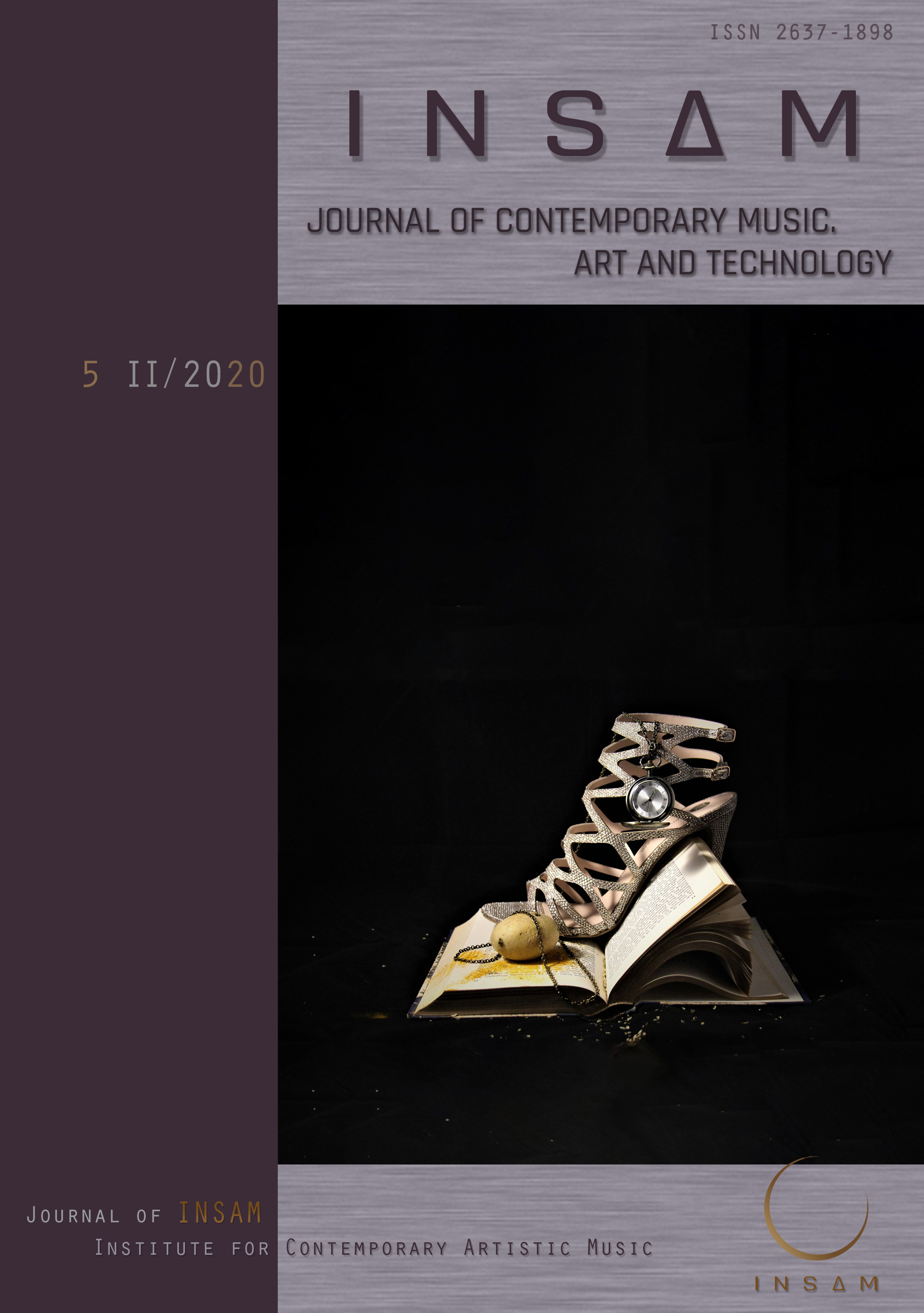Cartridge Music in the Quarantine: Presence, Absence, Contingency Setups and (De-)territorialised Performances
Cartridge Music in the Quarantine: Presence, Absence,
Contingency Setups and (De-)territorialised Performances
Author(s): Marcello Messina, Valério Fiel Da Costa, Marco ScarassattiSubject(s): Theatre, Dance, Performing Arts, Music
Published by: INSAM Institut za savremenu umjetničku muziku
Keywords: John Cage;Cartridge Music;experimental music; quarantine; pandemics;(de-)territorialisation of performance;contingency setups;
Summary/Abstract: Between the end of May and the beginning of June 2020, we performed individually, filmed, synced together, edited and presented a quarantine version of John Cage’s Cartridge Music. Uploaded on YouTube, the performance was broadcast on 1 June, as part of the 4th Research Colloquium of the Postgraduate Programme in Music of the Federal University of Paraíba. Stranded at home since March, unable to reach our respective faculty offices/studios, and mostly left with domestic gear, kitchenware,sound-producing car equipment, and our children’s toys, we put together an emergency version of the piece, characterised by three dramatically different setups, each with its own spatialities and soundworlds. Importantly, ouruse of the signifier “emergency” here is meant to refer much more to the concrete condition of our existences in this particular situation, than to the contingential circumstances of this specific musical activity. In this paper, we discuss the piece by considering its preparation, performance, presentation and audience reception. In particular, furthering our previous studies on the (de-)territorialisation of performance and on the territorial metaphors embedded in collaborative artistic interaction, we question the notions of “place” and “venue” in the context of a collective performance that happened in three different locations and of a subsequent première that did not happen in any tangible physical place at all. However, and in spite of the substantial de-territorialisation of our gig, we also consider a set of persisting spatial narratives that inscribe the performance in terms of both visually and aurally perceptible power relations. Finally, considering the inherent criticalities of the field(s) of “experimental”, “avant-garde” or simply “contemporary” music, we assess the gains and losses of such a dematerialised and yet ubiquitous performance in terms of audience participation and appreciation.
Journal: INSAM Journal of Contemporary Music, Art and Technology
- Issue Year: 2020
- Issue No: 5
- Page Range: 28-45
- Page Count: 18
- Language: English

